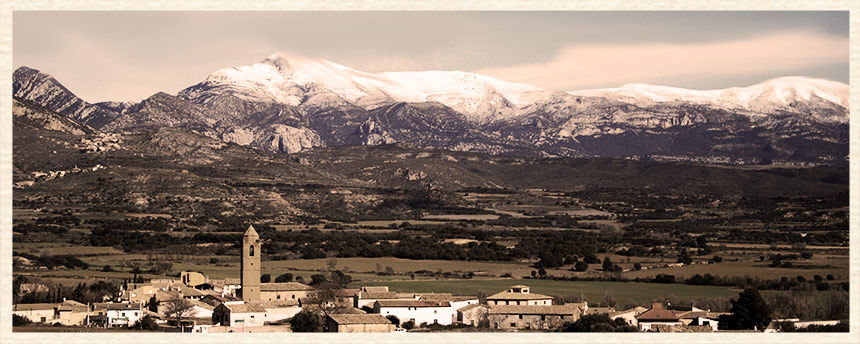
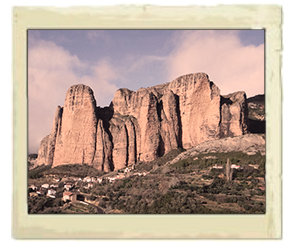
Aragon and Catalonia are ornithological destinations par excellence. Through them flows the mighty river Ebro, the longest river wholly within Spain, a tired colossus laden with silt by the time its waters blend with those of the Mediterranean. Most of this silt is left behind by a century-long process which has gone on to build up the Ebro Delta as it is known today. After the Coto Donana this is the most important wetland in the Iberian Peninsula with a rich and abundant birdlife well worth discovering amongst its ricefields, saltpans, saltmarshes, spits, bays and beaches.
The superb Ports of Tortosa overlook this aquatic paradise and here some of the best mountain scenery and wildlife lie in wait begging to be explored. Inland the steppes of the Monegros and Belchite formerly a vast mediterranean forest of pine and junipers , dotted here and there with saltlakes, are an arid but fascinating contrast, home to perhaps the most "Spanish" of avifauna: sandgrouse, bustards and larks. The exciting pre-Pyrenees of Aragon are wild and sparsely populated with humans but densely so with birds of prey. A few determined rivers cut through the southern expanses of the Sierra de Guara forming steep-sided gorges with incredible rock formations at Vadiello, Salto de Roldan, Mascún and Riglos. Here alpine birds such as Wallcreeper or Alpine Accentor are easy to observe in good numbers at close range during winter and early spring. This important pre-Pyrenean range is a real Lammergeier sanctuary holding the highest known density of this magnificent bird.
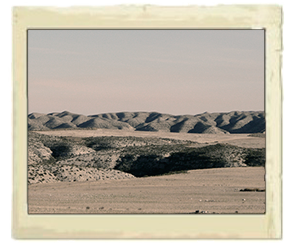
To the west lies the monastery of San Juan de la Pena, set high into the hills from where it dominates splendid views and where the cries of the Black Woodpecker from its woodland surroundings rise above those of the other forest birds.Entering the untamed Pyrenees the valley of Hecho reaches up to the French border and provides visitors with the opportunity to spot the difficult alpine specialities enjoying the magnificent forest of beech and fir and the spectacular rock cliffs. The National Park of Ordesa is beautiful and should not be missed, as neither should the breathtaking Añisclo Canyon where the river Bellos has eroded the underlying limestone to form a steep river gorge which is guaranteed to impress.
But not all is birds: this part of Spain is steeped in history and has a character of its own, built around a strong cultural identity and long-lasting traditions. Thus testify the numerous castles, monasteries, fortified towns , villages and churches that we will encounter on our travels, some of them wisely restored, others crumbling into the past. If that is not enough then the open , friendly and "alegre" character of Spain and its people should do the rest.
"The land of the lost memory.
The land of tranquillity.
The land with wild ravines and empty villages where time stands still, with its old hermitages and its forgotten bridges linking paths which lead nowhere."
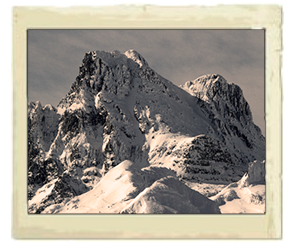
Spectacular and breathtaking are the Pyrenean landscapes which through history have been mythical and mysterious places. Here the natural habitats have retained their spontaneous character, having been submitted to ages of isolation due to the abrupt terrain and severe climatic conditions. The existence of a mountainous dorsal spine, extending from the Mediterranean Sea at cape Creus to the Atlantic sea at Irun dominating the Ebro basin to the south, was a fact well known by the oldest geographers. The Pyrenees are a mountainous barrier which separate two different worlds: to the north a land of hills and slopes with scattered habitats covered by oak trees and cultivation; to the south a dry and arid land, mediterranean in character where the rivers are extremely wide forming deep valleys with emerald waters.
In the Spanish Pyrenean structure we can distinguish four units of relief: Axial pyrenees, situated in the axis of the system and formed mainly by granite which includes the highest Pyrenean peak, Aneto at 3.404.- mts. as well as several peaks exceeding 3.000.- mts. The internal ranges sited to the south of the Axial area, are formed by limestone elevations of considerable altitude such as Monte Perdido 3.335.- mts. and amongst the most stunning and dramatic rock formations an obvious example is the Añisclo Canyon. The longitudinal intrapirinean depression is located between the internal and external ranges and a filling of soft sediments forms it. Finally we find the external ranges or Pre-Pyrenees, bordering with the Ebro valley formed by limestone and conglomerates where its beauty is outstanding at San Juan de la Peña, Riglos and the most representative of them the Sierra de Guara. In this complete relief, we can distinguish several bio-climatic habitats with their distinctive flora and fauna. From the tree line limit to 3000 mts. we find alpine meadows carpeted with flowers such us Purple Saxifrague, Edelweiss or Alpine Rose and vast rock surfaces, the habitat of the most sought after birds such us Alpine Accentor , Snow Finch or Rock Ptarmigan. At the height of between 800 and 2000 mts. the beach trees and black pine are predominant as in a central European mountain vegetation with abundant sub-alpine flowers and orquids, raptors are abundant being easy to observe several eagles, Lammergeier, and vultures, also woodland birds are well represented; Crested Tit and Black Woodpecker. At the lower altitude of 500 mts. with sub-mediterranean vegetation the holm-oak is predominant and we find several aromatic herbs such as thyme or lavender , here you can watch a vast number of families and beautiful birds; Roller, Bee-eater, Black Wheatear, Rock Thrush, several mediterranean warblers etc.
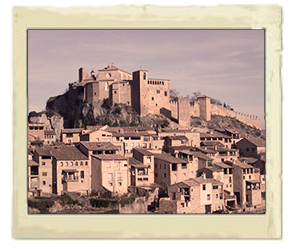
Today large areas of the Pyrenees are unpopulated with many villages abandoned to the vegetation and sadly ruined, other villages hardly exist with little more than half a dozen inhabitants, mainly comprised of old people. Hospitality and friendly nature are the most relevant characteristics of the people who remain in these mountains. The major part of the economic development in this part of Spain has turned in the last ten years towards tourism , not always with sustainable criteria , provoking that some places such as Alquezar, Ainsa , Benasque and Torla, have been the prey of tourist speculation and although interesting for visitors, have lost the peace of the traditional life to become massive tourist centres. There are still places where this tourism is almost unknown and here is where we will take you.